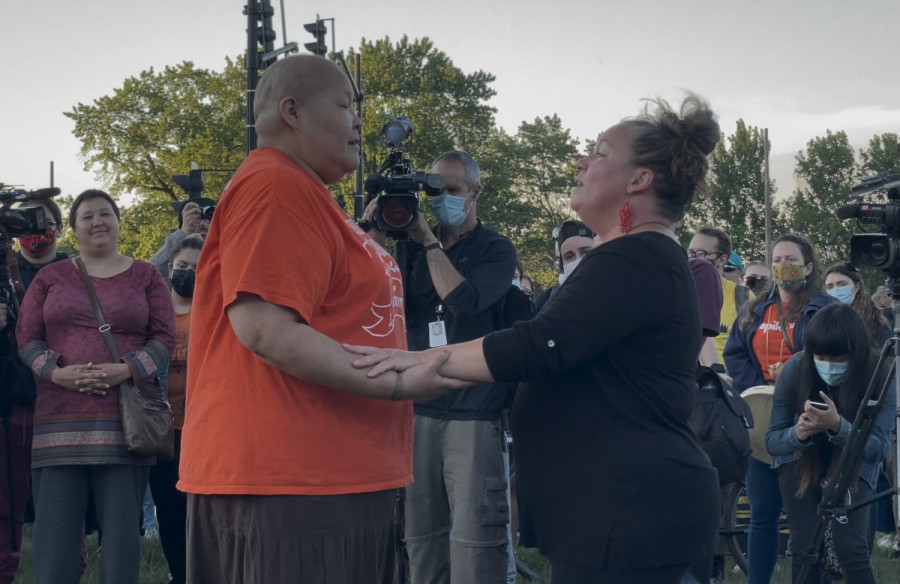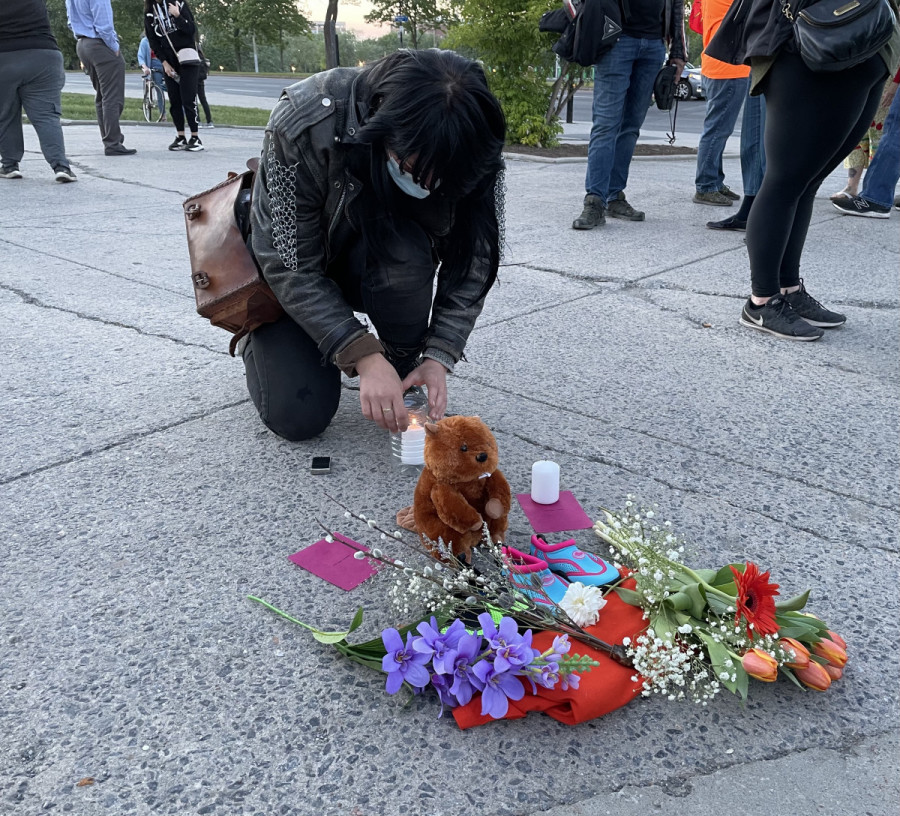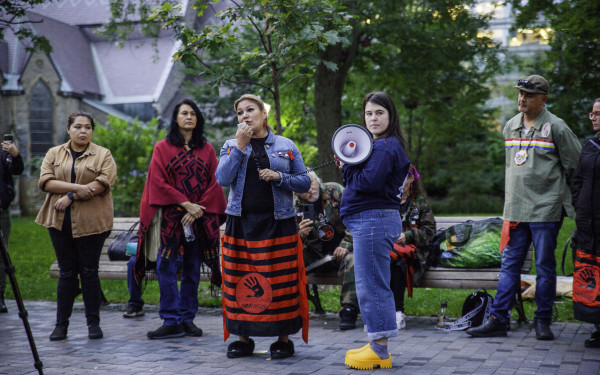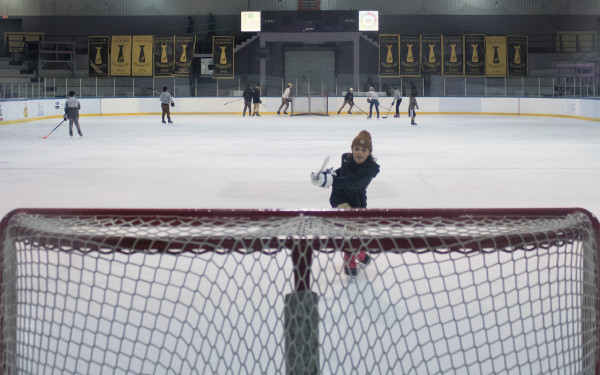“We can heal, but we can’t forget”
Indigenous community mourns children’s lives lost at BC residential school
Over 200 people gathered at Jeanne-Mance Park to observe a commemorative drumming held by Indigenous community members on May 31.
The event came after an announcement from the Tk'emlúps te Secwépemc First Nation that the remains of 215 Indigenous children were uncovered at the former Kamloops Indian Residential School in British Columbia.
At Jeanne-Mance Park, Indigenous community members sang in a commemorative drum ceremony and held a moment of silence for 215 seconds. Community members also spoke of their own experiences with residential schools.
“Both of my parents were survivors of residential schools. So I’m here because they survived,” said Nina Segalowitz. “My two daughters and my son are here because I survived […] we’re all here because our parents and grandparents survived.”

“So just remember how resilient we are as a people,” Segalowitz added. “Together we can heal, but we can’t forget.”
On May 28, Prime Minister Justin Trudeau said in a tweet that the discovery of the mass grave at Kamloops Residential Schools was “a painful reminder of that dark and shameful chapter of our country’s history.”
“It’s not just a dark chapter like Trudeau wants to play it as,” said Ocean Lewis, an Indigenous person and a student at McGill University. “It’s something that’s continuous even though residential schools ended.”
“[The Lac-Simon Anishnaabe community] has more than 50 per cent of [Indigenous children who] are now in the foster system, the youth protection system. This is the continuation of residential schools.” — Stéphanie Héroux
Kamloops Residential School was part of Canada’s residential school system, where over 150,000 Indigenous children were forcibly separated from their families from 1863 to 1996. According to a National Centre for Truth and Reconciliation Report published in 2015, residential schools were “a systematic, government-sponsored attempt to destroy Aboriginal cultures and languages and to assimilate Aboriginal peoples so that they no longer existed as distinct peoples.” According to Reconciliation Canada, more than 90 per cent of children in residential schools “suffered severe physical, emotional and sexual abuse.”
Tk'emlúps te Secwépemc Kukpi7 (Chief) Rosanne Casimir said in a statement that the deaths of the missing children were undocumented, and some of them were as young as three years old. Casimir also said the findings are preliminary and a report is forthcoming.

Stéphanie Héroux, a member of the Anishnaabe First Nation peoples from Lac-Simon, Quebec, spoke of the ongoing trauma that Indigenous children continue to live through today.
“For those of you who don’t know [the Lac-Simon Anishnaabe] community—that community right now has more than 50 per cent of [Indigenous children who] are now in the foster system, the youth protection system,” said Héroux. “This is the continuation of residential schools.”
The Canadian government and the churches involved have acknowledged their responsibility for an education system that was designed to “kill the Indian in the child.” In 2008, the Canadian government issued a formal apology to the First Nations and Indigenous communities for the residential school system and their mistreatment of Indigenous children. The Truth and Reconciliation Commission calls the residential school system “cultural genocide.” According to a 2015 TRC report, there are likely thousands more in similar graves across Canada.
Over the weekend, flags were flown at half-mast at federal government buildings, including provincial and municipal buildings throughout the country. The Quebec flag will be lowered at half-mast over the National Assembly for 215 hours to commemorate the 215 children whose remains were found at Kamloops Residential School.
“We just lost a whole generation [of Indigenous children],” said Héroux. “I’m going to sing this song so their spirits can join the spirit world and they can be at peace.”

_600_832_s.png)




_600_375_90_s_c1.jpg)